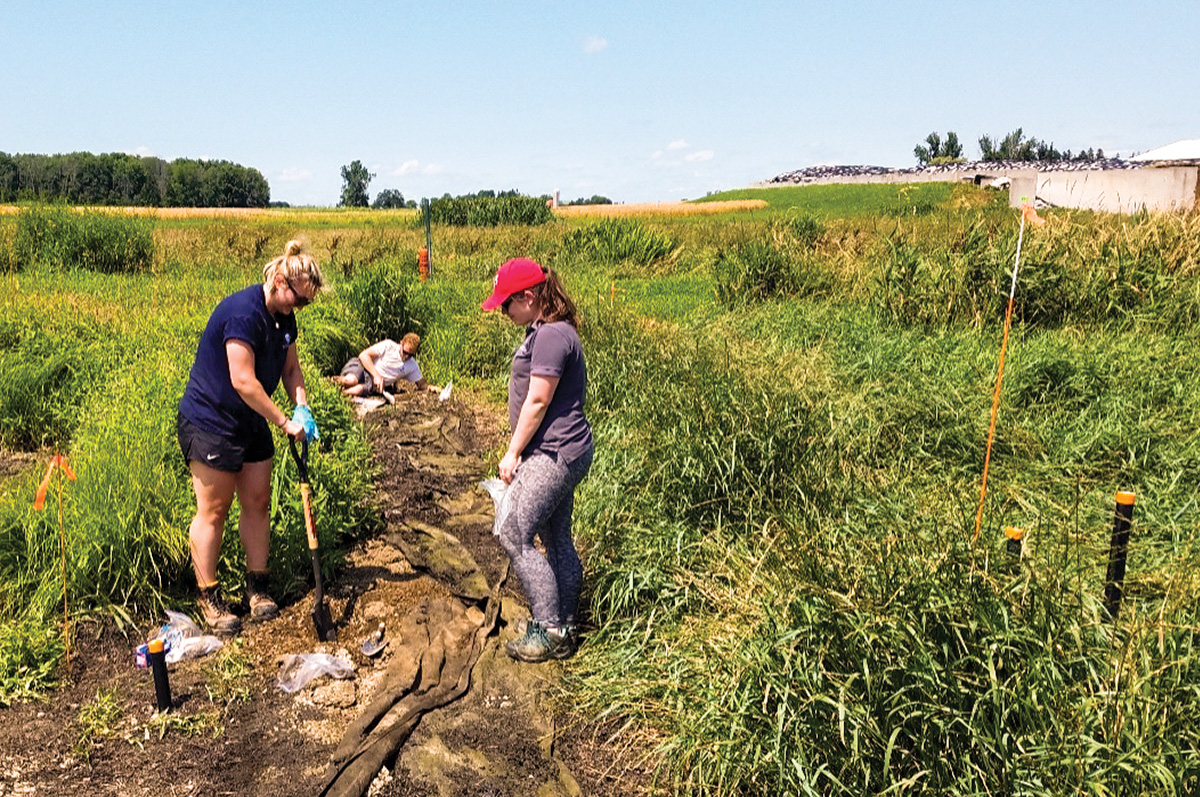Bunker silos are a popular option for storing large volumes of silage for animal feed; however, due to their large surface area and exposure of contents to precipitation, these structures present a unique challenge for effluent management due to infrequent flows with high nutrient concentrations, high biological oxygen demand and low pH.
While research on this topic is limited, some studies suggest that nutrient loads from bunker silo runoff, including phosphorus, are significant. New research, led by Dr. Merrin Macrae at the University of Waterloo and supported by Dairy Farmers of Canada and AAFC under the Canadian Agricultural Partnership AgriScience Program, has found that slag filters may be an effective solution for collecting and treating nutrient-rich runoff from bunker silos.
What did the research team do?
In the study, conducted in 2019, Macrae’s research team partnered with Hoenhorst Farms, a commercial dairy farm in southwestern Ontario, using a novel system to capture runoff. In this system, runoff is collected in a vegetated collection area, which acts as a buffer to slow the runoff (e.g., during storms). Over a period of days, the water then flows slowly through a porous slag filter, composed of iron slag mixed with gravel that traps phosphorus. Finally, after the filter, the water flows through a grassed area where it gradually infiltrates into the soil, leaving no discharge. The system was built in 2014 as a collaboration between the farm and the Upper Thames River Conservation Authority (UTRCA), and uses a non-proprietary design (i.e., not patented).
Researchers analyzed samples collected before the filter, after the filter and in the grassed infiltration area to examine concentrations of phosphorus and nitrates at each stage of the system. Baseflow and stormflow samples were taken to assess impacts related to runoff inflow concentration and filter residence time. Controlled lab experiments were conducted to assess the impacts of freeze-thaw cycles on filter longevity.
 The research team taking soil samples at the bunker silo slag filter site in Ontario, Canada. Courtesy photo.
The research team taking soil samples at the bunker silo slag filter site in Ontario, Canada. Courtesy photo.What did they find?
The study found there was considerable build-up of phosphorus in the wetlands soil above the slag filter, and the soils immediately beneath the bunker silo were saturated in terms of sorption capacity (i.e., the ability to capture phosphorus). While elevated levels of phosphorus were found in the samples above the slag filter, little remained in the soil after the filter, indicating that it was very effective in removing phosphorus from water. Tests also revealed that even after five years of use, the slag filter and wetland soils had ample sorption potential left, suggesting the system has high longevity with a potential lifespan of a decade or more.
Why is this important?
Based on this research, slag filters were proven to be a low-maintenance, effective and long-lasting system to capture phosphorus from bunker silo runoff. Slag filters may be a particularly suitable option for farmers with adequate land space to implement this system. A member from Hoenhorst Farms commented on their experience with this project, saying, “The phosphorus filter bed is easy to maintain and delivers the results we want. We appreciate the collaboration with the Upper Thames River Conservation Authority and the University of Waterloo research team to monitor and ensure the system keeps working well.”
These findings will help to inform expectations for nutrient removal in current runoff management practices, as well as inform best practices specifically for bunker silo effluent management. When asked about this initiative, a representative of UTRCA noted, “This was the first project UTRCA completed that utilized slag as a way to reduce nutrient losses. Hoenhorst Farms took a proactive approach to mitigate a water quality concern from their operation. It was created as both an experiment and demonstration, which is why it has remained a site of interest to researchers.” Importantly, this work serves as an example to farmers of the potential for continuous improvement in strategies to reduce the environmental impact of dairy farming moving forward.









